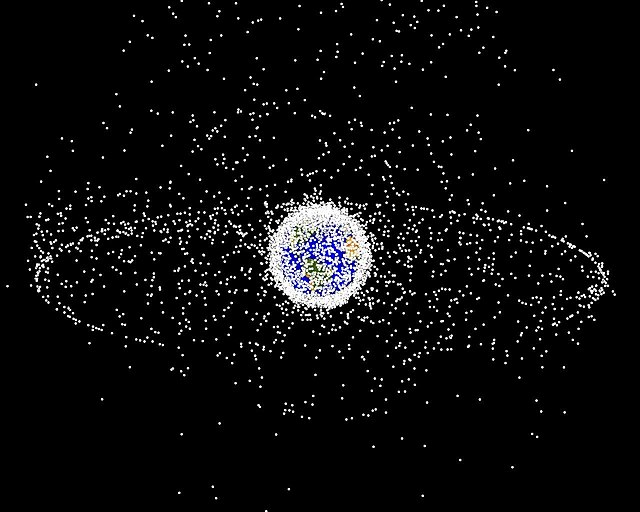Pollution in the Cosmic Sea
Debris plot by NASA. “A computer-generated image of objects in Earth orbit that are currently being tracked. Approximately 95% of the objects in this illustration are orbital debris, i.e., not functional satellites. The dots represent the current location of each item. The orbital debris dots are scaled according to the image size of the graphic to optimize their visibility and are not scaled to Earth. The image provides a good visualization of where the greatest orbital debris populations exist. This image is generated from a distant oblique vantage point to provide a good view of the object population in the geosynchronous region (around 35,785 km altitude). Note the larger population of objects over the northern hemisphere is due mostly to Russian objects in high-inclination, high-eccentricity orbits.”
October 26, 2022
Environmental issues often take the stage when it comes to media outlets. Topics like plastic pollution in the ocean get lots of attention; however, there is another kind of ocean that seems to be often left out.
The ocean in question stands not as the lowest point on the Earth’s surface, but rather miles above. Think of the cosmos as a sea: vast, deep, and hazardous – not unlike the seas here on Earth. And that sea is being polluted much like ours. Both threaten the existence of our species albeit in different ways. Though the sea below has been analyzed with scrutiny, not many have sought to look up.
For the past seven or so decades, various nations of the world have taken an interest in space exploration for scientific or militant purposes. This advancement into the outer reaches of our world has polluted the upper atmosphere. According to NASA, there are currently over 27,000 estimated bits of space junk in orbit around our planet.
So what is space junk anyway? Space Junk can be defined as any human-made object in space that no longer serves any purpose. Over the years, countless bits of rocket stages, damaged/inactive satellites, and even nuts and bolts, have collected into a swarm.
None of this debris can ever dream of touching Earthen soil again due to atmospheric friction upon re-entry — so what is the problem?
Within the upper confines of outer space, objects tend to move faster than those contained in the atmosphere. Even small objects like paint flakes can pack a punch with the velocities that are reached up there. The more abundant these minor sized bits get, the more likely they will do damage to research equipment and important satellites.
As of right now, further space exploration is not threatened by this trash buildup and collisions are not common. However, Thomas Schildknecht, a professor at the University of Bern Switzerland says, “But the risk is increasing, and if we don’t pay attention, then in 10 years from now we’ll be at the level where we can’t do anything.” So while there is no immediate threat, there definitely is a cause for concern.
If this topic concerns you, here are some sources of information you can read to learn more!
https://www.nasa.gov/mission_pages/station/news/orbital_debris.html
https://www.nhm.ac.uk/discover/what-is-space-junk-and-why-is-it-a-problem.html
https://www.nbcnews.com/science/space/us-getting-serious-space-junk-rcna50473
























































